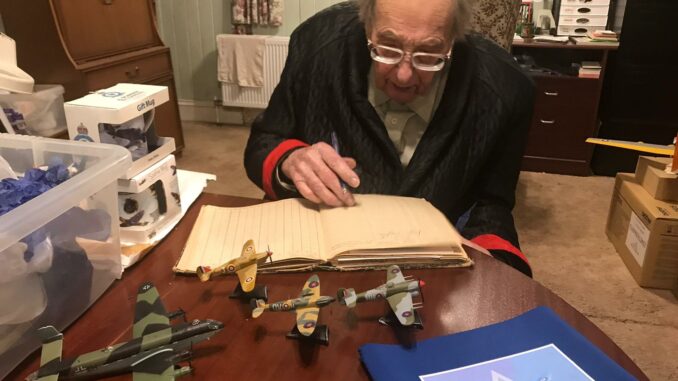
Imagine being a 12 year old London resident living through the German bombing campaign of 1940 and 1941. Your childhood containing almost daily bombing raids on your city in a deliberate campaign to put terror in you. This was the reality for Mr Les Grafton living through what commonly is referred to as the Bombing of London, London Blitz or simply as The Blitz.
Facilitated by Ross Stewart, Mr Grafton’s honored The Log Book by adding his signature in Southampton on February 8th, 2019.
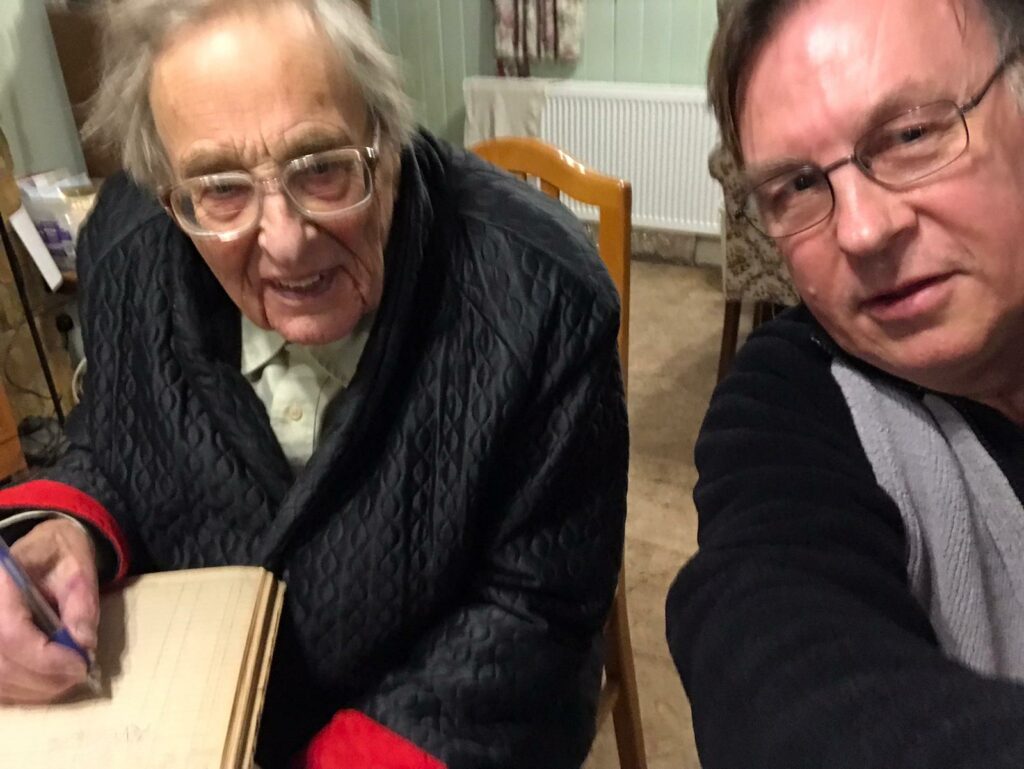
56 days of bombing
By September 1940 the Luftwaffe had lost the Battle of Britain (the battle for air superiority). German air fleets were then ordered to attack London to draw RAF resources into a battle of annihilation. Starting September 7th London was systematically bombed for 56 of the following 57 days and nights.
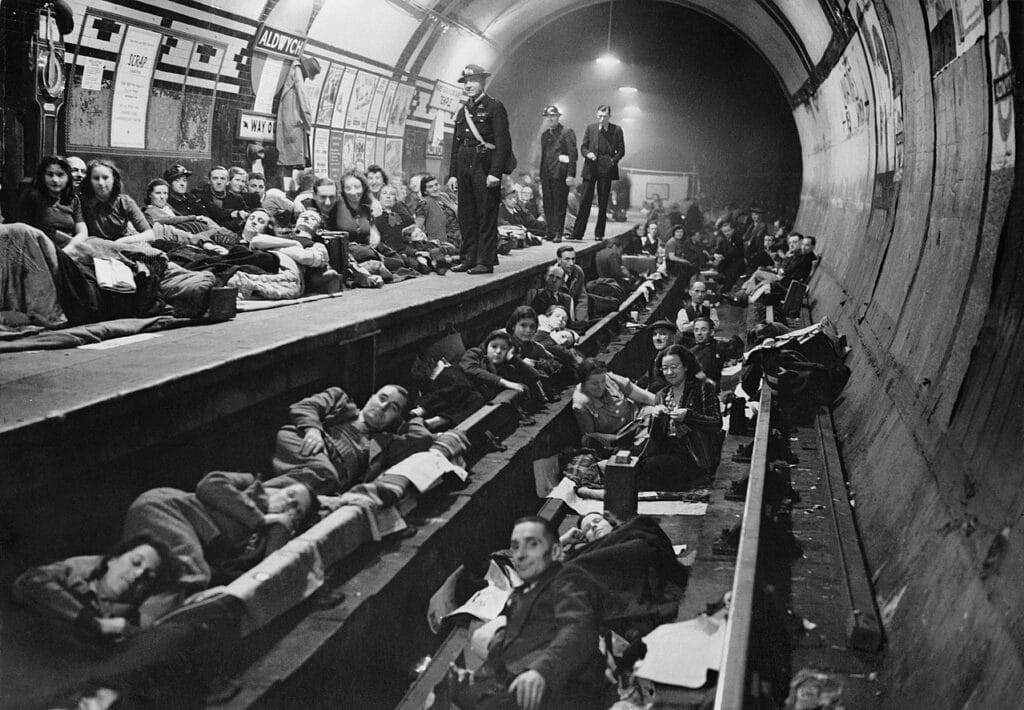
By the time the Luftwaffe shifted strategy through Hitler’s Directive 23 (Directions for Operations against the English War Economy) issued February 6th 1941 London alone had suffered some 71 raids with 18 291 tons of ordnance dropped without breaking the British spirit. People referred to raids as if they were weather, stating that a day was “very blitzy”.
“By every test and measure I am able to apply, these people are staunch to the bone and won’t quit … the British are stronger and in a better position than they were at its beginning”.
Unknown American witness on British spirit
Terror bombing
London residents like Mr Grafton would also later in the war experience the terror of “Buzz bombs”, “Doodlebugs” also known as the V-1 flying bomb. The German weapon was first of the so called “Vengeance weapons” or “Vergeltungswaffen” in German which translates to “retaliatory weapons” or “reprisal weapons”. Whatever the name this weapon was designed for long-range strategic bombing. In particular terror bombing with the specific target of weakening or breaking enemy morale.
The V-1 and also the later design V-2 would be used in a campaign against Britain from 1944 through 1945. Prompted by allied Normandy Landings June 6th the first V-1 flying bomb attack on London was carried out on June 13th. From France some 10 V-1’s were launched of which 4 reached Britain. The first V-1 to hit London struck next to the railway bridge on Grove Road, Mile End killing 8 people. From June 15th attacks was carried out at a rate of approximately 100 a day. A total of 9 251 V-1’s were fired at targets in Britain with the majority aimed at London. Some 2 515 reached the city killing 6 184 civilians and injuring over 17 000.
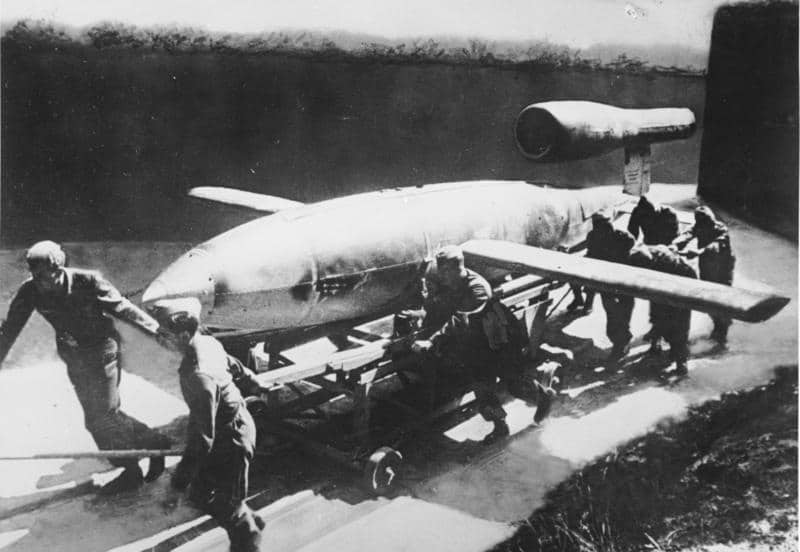
The distinctive sound of the V-1 comes from it’s pulse jet engine. When it reaches target the propulsion unit splutters and cuts out. The following eerie hush before impact is described as quite terrifying. The first V-2 rocket was launched at London September 8th 1944. Some 1 402 rockets were fired at the UK, the vast majority against London killing over 2700 people. With the V-2 being supersonic it could not be heard, and was rarely seen, it’s psychological effect suffered in comparison to the V-1.
Near misses
Mr Les Grafton recalls two near misses where he tricked death. The first one being returning home with his mother from the south coast. They made the decision to return home by train and underground one day earlier than planned. The decision turned out to be a lucky one as the train station nearest their home was destroyed that same day.
The second escape was purely down to accidentally sleeping in. Mr Grafton had a paper round in the Alexandria Palace area of London. On this morning he was about an hour late when he got to a particular cul de sac. The street it was cordoned off. Inquiring with the air wardens he discovered the answer. A V1 bomb had destroyed all houses at the end of the road. This had only occurred about one hour prior to Les Grafton’s arrival. Had he not slept in he would have been there putting papers in letter boxes.
On this journey of collecting witness accounts for The Log Book project it is easy to, among the countless incredible stories of grim battle, miss the immense terror and suffering civilian population endured. In 1945 at the age of 15 Mr Grafton volunteers to be an Air Warden. As such he very deliberately puts himself in harms way given their duties.
9 impacts per day
Just to penetrate and highlight the terror let’s do some math. From the first V-1 launch June 13th 1944 to the end of the V campaign ending by April (last action March 29th) 1945 some 2 515 V-1’s reached London. This is 289 days with almost nine (8.92) V-1 impacts per day. Every day…not taking into account the number of V-1’s destroyed by RAF in flight or by AA from the ground. Adding to this 1 358 rockets of the V-2 design aimed at London. First launch September 8th 1944 and the last one landing in Kent March 27th 1945. This equates to almost seven V-2’s per day.
One must agree that the word “terror” is fitting.
Mr Les Grafton’s legacy
In the Wethersfield Airfield Museum there are over 100 scale model aircraft presented. All are donated by the late Mr Les Grafton and they are for the most part in 1/124 scale.
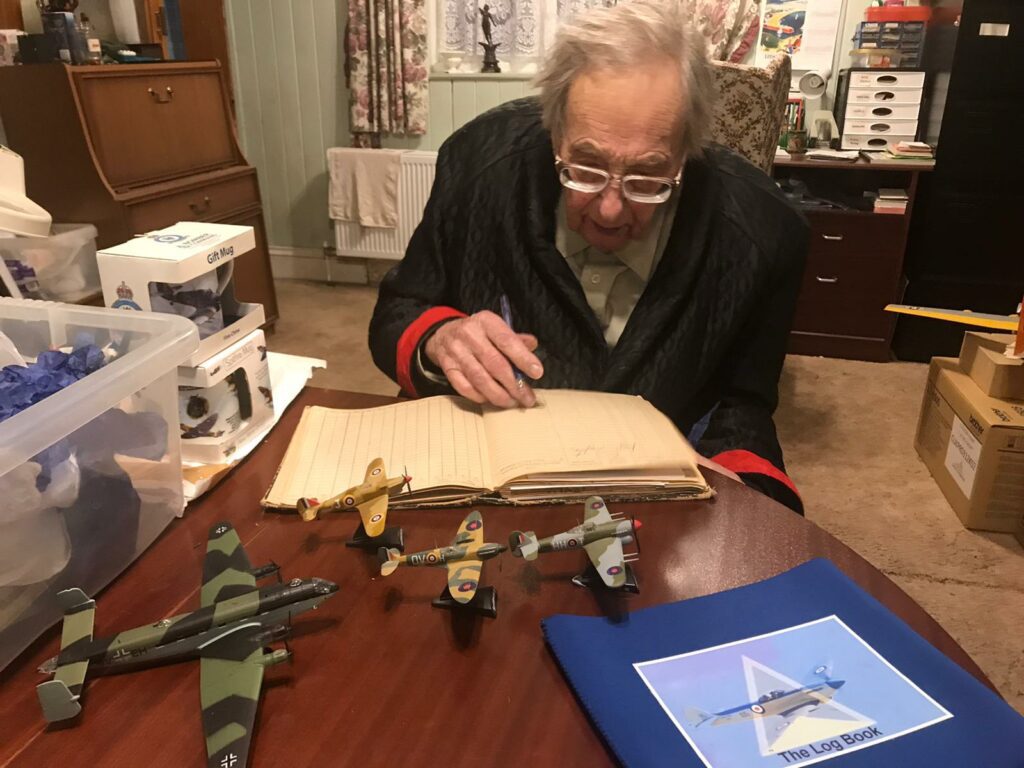

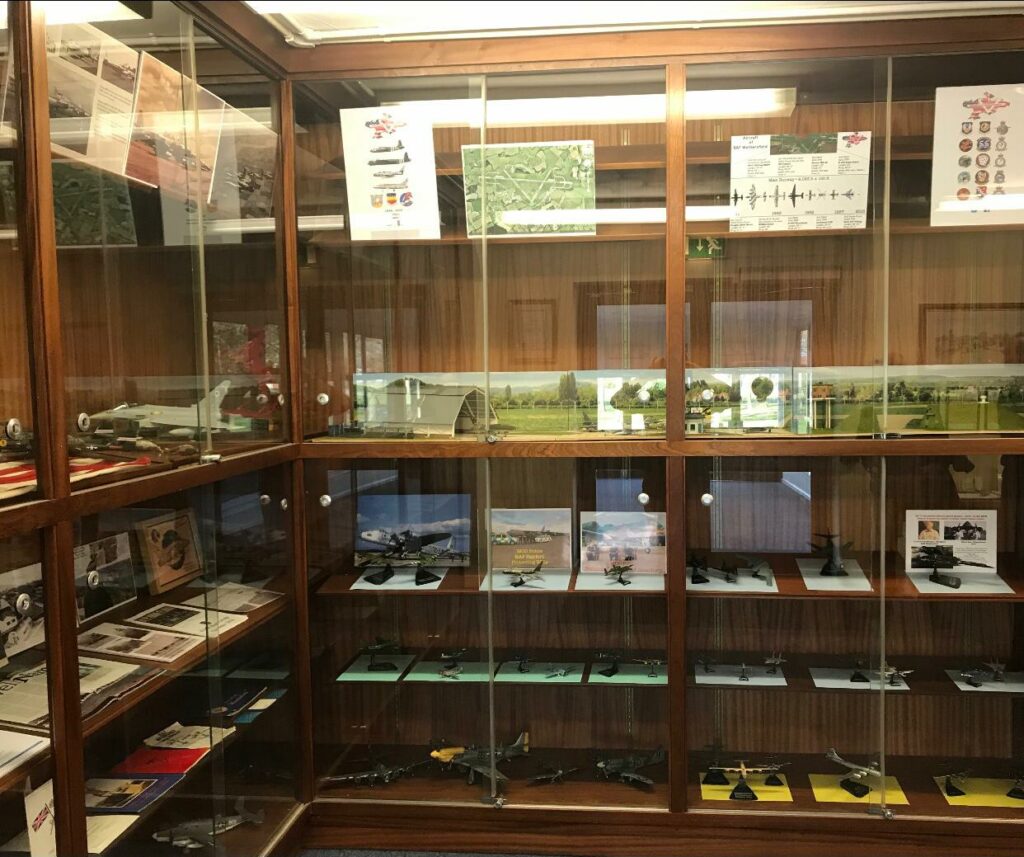


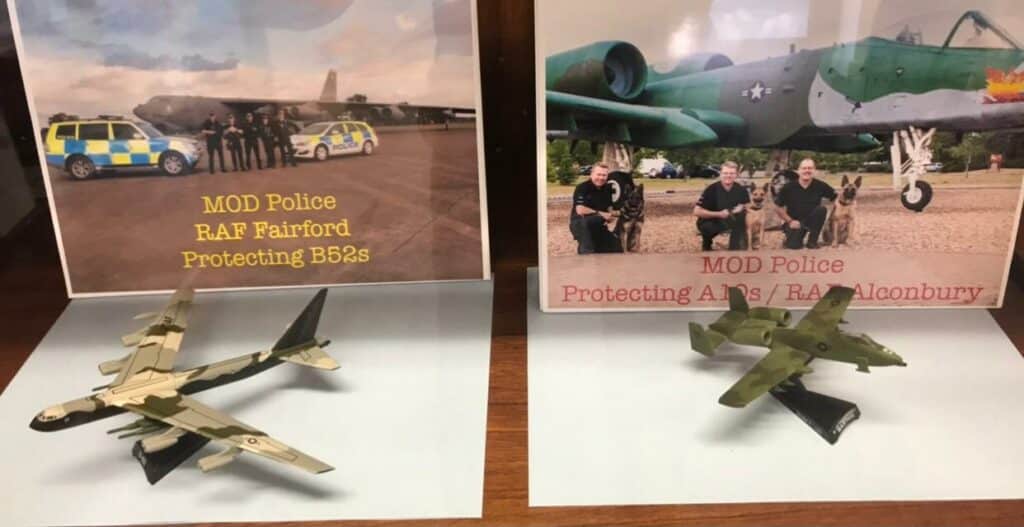


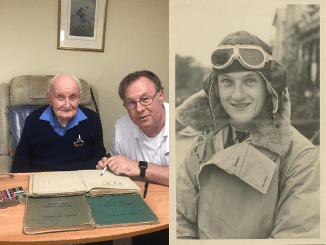
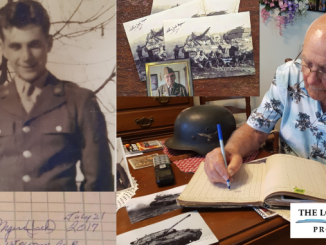
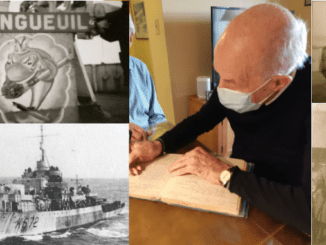
Be the first to comment